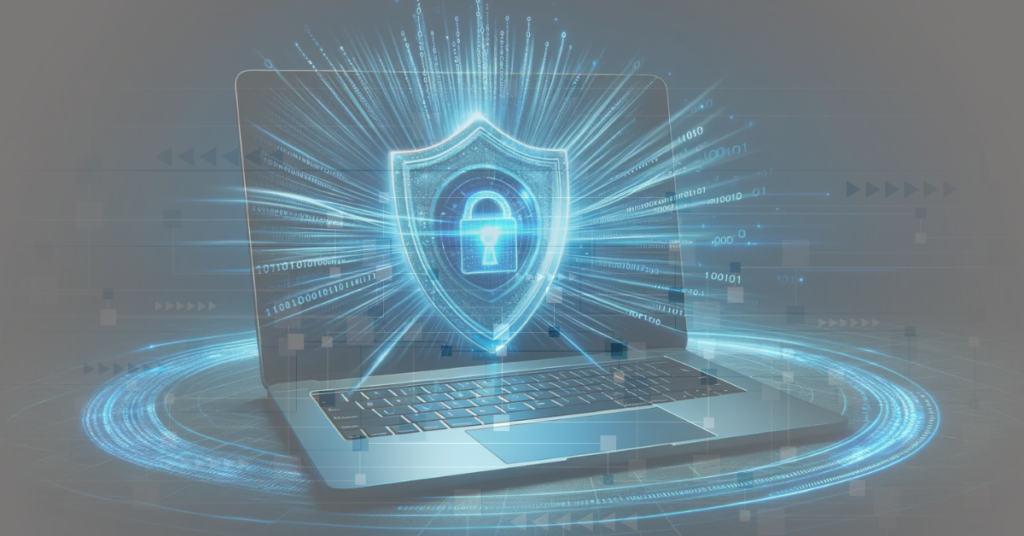Introduction to Cyber Awareness
In today’s digital age, your home computer is more than just a tool for work or entertainment—it’s a gateway to your personal information and online interactions. With cyber threats lurking around every corner, protecting this vital asset has never been more crucial. As we step into 2024, the landscape of How Can You Protect Your Home Computer Cyber Awareness 2024 continues to evolve, making it essential for everyone to stay informed and vigilant against potential risks. So how can you protect your home computer? Let’s dive into key strategies that will help safeguard your data and privacy while navigating the internet with confidence.
Understanding the Risks of Cyber Attacks
Cyber attacks have become a pervasive threat in today’s digital landscape. With more devices connected to the internet than ever before, vulnerabilities are at an all-time high.
Hackers employ various tactics, from malware to ransomware, exploiting weaknesses in software and human behavior. One click on a malicious link can lead to devastating consequences.
Your personal data is valuable. Identity theft, financial loss, and even emotional distress can stem from these breaches. It’s not just large corporations that are targeted; individuals often find themselves in the crosshairs too.
The rise of remote work has further complicated matters. Home networks may lack robust security measures typically found in corporate environments.
Understanding these risks is crucial for effective protection strategies. Awareness empowers you to recognize potential threats before they escalate into significant issues.
Steps to Protect Your Home Computer
Protecting your home computer is essential in today’s digital landscape. Start by installing reputable antivirus and firewall software. These tools act as your first line of defense against malware and other threats.
Next, keep all software and operating systems updated. Regular updates often include patches for security vulnerabilities that cybercriminals exploit.
Strong passwords are a must. Create unique combinations that blend letters, numbers, and special characters. Avoid using easily guessable information like birthdays or common words.
Be vigilant about phishing scams as well. Always scrutinize emails or messages requesting personal information before clicking any links.
Educate yourself on safe internet practices too. Understanding the basics can significantly reduce risks while you navigate online spaces.
Remember to maintain a cautious outlook towards suspicious websites and downloads to further enhance your protection measures.
Installing Anti-Virus and Firewall Software
Installing anti-virus and firewall software is one of the first defenses against cyber threats. These tools work tirelessly in the background, scanning for potential dangers lurking on your system.
Anti-virus software detects malicious files before they can cause harm. It regularly updates its database to recognize new viruses, ensuring you’re always protected from emerging threats.
A robust firewall acts as a barrier between your computer and the outside world. It monitors incoming and outgoing traffic, blocking unauthorized access while allowing legitimate connections.
Choosing reputable software is vital. Look for products with strong reviews and proven track records. Some options even offer real-time protection and additional features like web filtering or email scanning.
Remember to configure these tools appropriately after installation. Fine-tuning settings allows them to function optimally, providing better security tailored to your specific needs. Don’t underestimate their importance; they are essential layers of defense in today’s digital landscape.
Updating Software and Operating Systems Regularly
Keeping your software and operating systems up to date is crucial for cybersecurity. Each update often includes fixes for vulnerabilities that hackers exploit. Ignoring these updates can leave you exposed.
Many programs have an automatic update feature. Enable it to ensure you’re always protected without the hassle of manual checks. It’s a simple step with significant benefits.
Sometimes, updates introduce new features or enhance performance too. Staying current means not only better security but also improved functionality.
Remember, operating systems aren’t the only focus—applications like browsers and email clients must be updated as well. They are frequent targets due to their widespread use.
Make a habit of checking for updates regularly if auto-update isn’t an option. A quick five-minute check can save you from potential threats lurking online, keeping your home computer secure in this digital age.
Creating Strong Passwords and Avoiding Phishing Scams
Creating strong passwords is your first line of defense against cyber threats. Aim for a mix of letters, numbers, and special characters. Use at least 12 characters to make it harder for hackers to crack.
Avoid easily guessable information like birthdays or pet names. Instead, consider using passphrases—long strings of words that are memorable yet complex.
Phishing scams often disguise themselves as trustworthy sources. Always scrutinize emails asking for personal information. Look out for odd email addresses or grammatical errors; these can be telltale signs.
Never click on links in unsolicited messages. If something feels off, go directly to the website by typing its address into your browser instead of following links provided in emails.
Stay vigilant and trust your instincts when navigating the digital landscape. This awareness can save you from potential data breaches and other security issues down the line.
Educating Yourself on Safe Internet Use
Staying informed about safe internet practices is essential in today’s digital landscape. Knowledge empowers you to recognize threats and avoid pitfalls.
Start by familiarizing yourself with common cyber terminology. Understanding terms like phishing, malware, and ransomware can significantly enhance your awareness.
Participate in online courses or webinars focused on cybersecurity. Many organizations offer free resources that break down complex concepts into digestible information.
Follow reputable cybersecurity blogs and news outlets. This keeps you updated on the latest trends in security threats and protective measures.
Engage with communities or forums dedicated to cyber safety. Sharing experiences can provide valuable insights while also reinforcing your own learning.
Remember, staying vigilant means being proactive about knowledge acquisition. The more you know, the better equipped you’ll be to navigate potential risks online.
Being Wary of Suspicious Websites and Downloads
Navigating the internet can be tricky with countless websites vying for your attention. It’s essential to remain vigilant when clicking on links or downloading files.
One red flag is an unfamiliar website. Always check the URL and look for secure indicators, like “https://” at the beginning. If you notice misspellings or unusual domain extensions, proceed with caution.
Downloads should come from trusted sources only. Even if a file looks tempting, think twice before hitting that download button. Malware often hides in seemingly harmless programs.
Take time to read reviews about websites before engaging with them. A quick search can reveal whether others have had negative experiences.
Stay updated on current scams and phishing attempts circulating online. Cybercriminals are constantly evolving their tactics; being informed is your best defense against falling victim to suspicious sites or malicious downloads.
Securing Your Home Network
Securing your home network is essential for protecting personal data. Start by changing the default username and password on your router. Many users forget this step, leaving their networks vulnerable.
Next, enable WPA3 encryption if available. This feature adds an extra layer of security to your Wi-Fi connection. Always opt for a strong passphrase that combines letters, numbers, and symbols.
It’s also wise to disable remote management features unless absolutely necessary. These settings can provide unauthorized access if not properly configured.
Regularly check which devices are connected to your network. Unrecognized gadgets could indicate a security breach.
Consider using a guest network for visitors or IoT devices; it keeps them separate from your main devices and enhances overall security measures in place at home.
The Importance of Backing Up Data
Backing up your data is a non-negotiable aspect of protecting your home computer. Imagine spending hours crafting the perfect document or storing precious family photos, only to lose them all in an instant due to a cyber attack or hardware failure. Regular backups safeguard against such losses, helping you maintain How Can You Protect Your Home Computer Cyber Awareness 2024.
Utilize external hard drives or cloud storage solutions for backups. Both options provide different advantages; external drives are quick and offer direct access, while cloud services allow you to retrieve files from anywhere with internet connectivity. Schedule automatic backups if possible so that you don’t have to remember this crucial task amidst daily responsibilities.
Additionally, it’s wise to keep multiple copies of critical files in various locations. This minimizes risk even further. The peace of mind that comes with knowing your data is secure cannot be overstated.
Taking these steps will empower you as a digital citizen in 2024 and beyond, ensuring that you’re not just reactive but proactive about cybersecurity at home, maintaining How Can You Protect Your Home Computer Cyber Awareness 2024.
Curious about the length of a hockey game? Learn more in our hockey game duration article.







